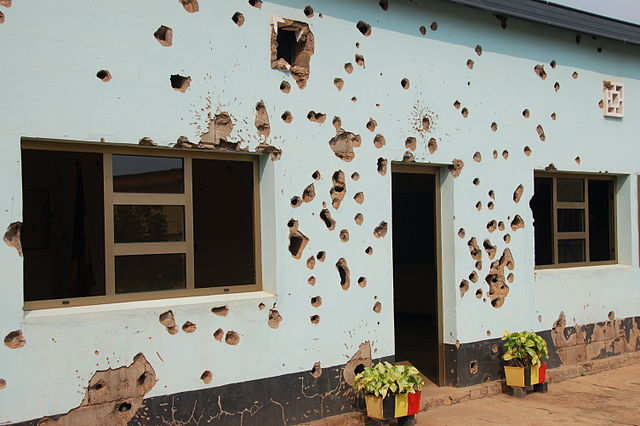Last updated on August 27th, 2019
10. Killing of moderate leaders
Within hours of President Juvénal Habyarimana’s death, security forces and the militias moved around Kigali with a list of prominent moderate journalists and politicians. The mission resulted in several fatalities, including Prime Minister Uwilingiyiman (Rwanda’s first and so far only female prime minister) and her husband, Agriculture minister Frederic Nzamurambaho and Constitutional Court president Joseph Kavaruganda.
11. Aftermath of the moderates purge
Although the plot to eliminate moderate politicians was largely successful, some leaders survived the attacks and immediately went into hiding. These include prime minister-delegate Faustin Twagiramungu. The attacks crashed the likelihood of a future moderate government.

12. Torture and killing of Belgian soldiers
The Presidential Guard unit tortured and killed ten Belgian soldiers who were escorting Prime Minister Uwilingiyimana. The troops were disarmed and taken to Camp Kigali military base with the assistance of a crowd of civilians. A Belgium court later charged and sentenced army Major Bernard Ntuyahaga to twenty years in prison for the killing of the soldiers. The major was the commanding officer of the Presidential Guard unit; he pleaded not guilty during the genocide trial in Belgium.
13. Nazi Holocaust and the Rwandan genocide
The high rate of killings witnessed between April and July of 1994 is considered five times higher than the Holocaust of Nazi Germany. This comparison is based on estimates published by the United Nations. The youth militia, the Presidential Guard and gendarmerie supported by civilians were able to kill at high rates because there was no opposition until the advancing RPF rebels gained considerable ground.
14. Hutus killed their Tutsi neighbors
In rural parts of Rwanda, Hutus targeted their Tutsi neighbors as part of a nationwide ethnic cleansing. People from different ethnic backgrounds had lived together peacefully for many years. Hutus found it easy to identify the Tutsis in rural areas. In urban areas, security forces and the militia used national identity cards to single out Tutsis for immediate slaughter.
15. Hutu victims
Some Hutus also died during the 100-day period for a variety of reasons. These include being a journalist, sympathize with the moderate opposition parties or resemble the Tutsis in appearance.
16. Incitement and spread of violence
Apart from spreading hate propaganda through radio, Hutu extremists and army commanders spread rumors that Hutu President Juvénal Habyarimana was assassinated by Paul Kagame’s RPF. Local officials helped spread the rumors and the order to start slaughtering the Tutsis, including babies. The early phase of the killings began in several provinces, including Kigali, Gikongoro, Cyangugu, Ruhengeri, Kibuye and Kibungo. Some provinces, such as Gitarama and Butare experienced less violence in the early stages because they were governed by moderate leaders who opposed the atrocities.
17. Unaffected areas
Tutsis in parts of the Byumba province and eastern Ruhengeri were left unharmed by the surge in ethnic violence. The areas were already under control of the Rwandan Patriotic Front (RPF).
